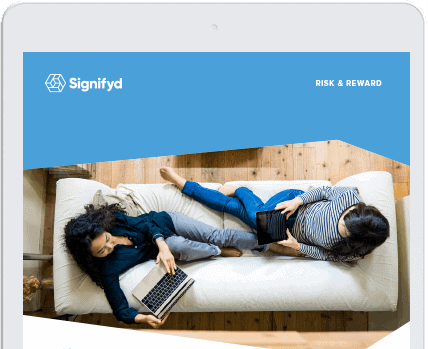With non-essential retailers set to open in England on Monday and with many non-essential stores already operating in North America, it’s fair to wonder what retailers around the world can learn from each other about operating in the COVID-19 era.
Shopkeepers in England are preparing to operate under similar conditions to those that retailers in the United States have employed as a patchwork of states allow stores to welcome back customers. No firm dates have been set for reopening non-essential stores in the rest of the UK, while retailers in various other parts of Europe have already opened.
To say shopping in stores will be different for the foreseeable future, is a bit of an understatement
Retailers are installing clear screens at checkouts, or tills, to protect customers and clerks alike, according to the BBC. They are creating one-way shopping aisles and designating separate store entrances and exits. Government guidance ahead of Monday’s reopening has called for social distancing — two meters in the UK, six feet in the U.S. — will be required, according to The Sun. Stores will need to limit the number of customers in the store at one time to ensure social distancing, the publication says. And cleaning and sanitation will be front and center.
- Non-essential retailers will be allowed to open their brick-and-mortar stores in England on Monday. Meanwhile, states in the U.S. have eased restrictions to varying degrees, meaning most stores in most states are allowed to be open.
- Whether consumers are ready to head back into stores is yet to be seen. Polls indicate significant appetite, but also significant numbers of consumers who are waiting for a vaccine or a cure for COVID-19.
- Omnichannel is no longer a buzzword or a nice to have. Retailers need to be ready to serve customers through click-and-collect, in-store and curbside pickup, ship from store, order by phone, traditional delivery and in-store shopping.
The cautionary steps in England are similar to those being taken in the United States, as non-essential stores have been given the go-ahead to open. And while the physical manifestation of how shopping has changed will be hard to miss, there is a deeper change that both retailers and customers will need to adjust to.
What will “customer experience” mean in the post-COVID era?
Consider, for instance, the long-standing belief that shopping is about the experience. Shopping has always been a social activity, a recreational activity for many. But it’s hard to imagine, in the era of COVID-19, that shopping in the short term will be pleasurable.
“Social distancing also takes away the fun and positive experience of shopping. All these factors mean that it will be difficult at first, and for many months after,” Andrew Goodacre, chief executive of the British Independent Retailers Association told the BBC.
Indeed, recent polling shows that one-third of Britons will require more assurances, including a vaccine or treatment for COVID-19, before they’d feel comfortable shopping in stores. And 10% flat-out say they will avoid in-store shopping once stores reopen. In a separate survey, nearly half of U.S. consumers (48.8%) said they would not return to normal activity, presumably including pre-pandemic levels of in-store shopping, until a vaccine was available.
And for those who do return to stores, shopping will be anything but normal for the foreseeable future. In the U.S., the restriction on the number of shoppers has led to lines of customers waiting to enter stores. The lines look all the more imposing due to the need for those waiting in line to stand six feet apart. Queues at non-essential stores are likely to be part of the shopping experience in the UK, too.
Safety, it seems, is the new experience.
“The customer expectation has completely changed,” says Shelley Kohan, a retail consultant, who teaches at the Fashion Institute of Technology and Syracuse University in New York.
“We talked about experiential retail and one-on-one and personalization, curated products, curated service, Kohan says. “You know what? That has now taken a second seat, at least for the moment. What shoppers are really looking for now, at the top of the list, is safety. Is this a safe environment for me to be in? Is the retailer practicing government-mandated policy and procedures?”
Kohan shares some other thoughts on the reopening in the video interview below.
And while retailers need to be concerned about keeping their stores safe, they are also worried about whether any amount of cleaning and distancing and face masks will be enough to bring shoppers back to their stores.
“The big issue, I think, for a lot of businesses will be whether they get enough business coming in in those first few days to enable them to pay their staff.” Jeanette Walsh, who runs a sweet shop in England called Truly Scrumptious, told the BBC.
The prospect is all the more worrisome given that the need to reassure customers in very visible ways is likely to increase operating costs.
“Retailers have to demonstrate that they’re providing a very safe shopping environment,” Kohan says. “It’s changed how we have to do business.”
Doing it right will require employees who can help limit the number of people in the store. It will call for signs regarding social distancing. It will mean constant and conspicuous cleaning and installing sneeze guards, supplying hand sanitizer. It might mean temperature checks at the door.
How retailers can build customer loyalty from six feet away
“It is concerning,” Kohan says. “You’re going to have a business that is going to do 20% of the revenue that it used to do and, oh by the way, you’re adding more cost into it. It becomes very problematic from a P&L perspective.”
But there are steps retailers can take to build new kinds of customer experiences and to encourage loyalty among shoppers.
“I think the key takeaway here is retailers really have to be able to offer an alternate way of doing commerce with the shopper, so the shopper can pick and choose which way they’re most comfortable shopping,” Kohan says.
For instance, she says, retailers can offer home delivery or buy online, pick up in store, also known as click and collect. Such transactions mean less time in the store itself. Curbside pickup, a close cousin to BOPIS in the United States, is another channel retailers should consider. In fact, order online pick up at the store or at the curb channels are growing dramatically since the days before the pandemic.
Buy online, pick up in store or at the curb orders were up 247% the last week of May compared to pre-pandemic levels, according to data from Signifyd’s Commerce Network. The network is made up of thousands of retailers selling in hundreds of countries.
Retailers can also engage shoppers with livestreaming shopping sessions, during which retail associates provide their expertise and advice to a customer who is visiting the store virtually from her or his home.
Most importantly, retailers can reassure customers that they are looking out for the health of consumers and employees as we all adjust to a new and different way of shopping.
Photo by Getty Images
Wondering how to launch or improve your BOPIS or curbside pickup? Reach out.








